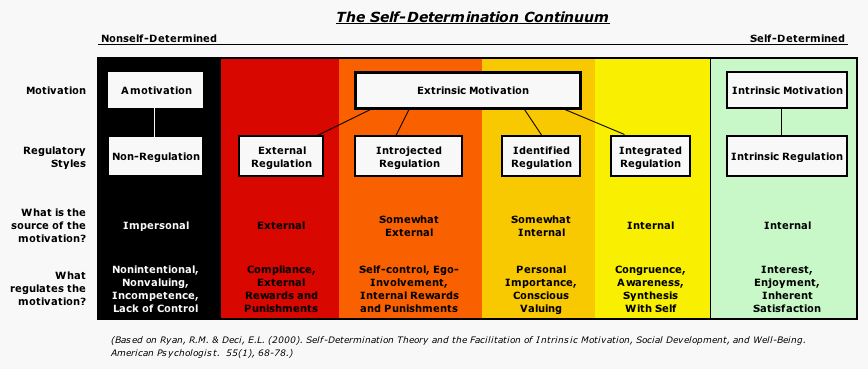“…question any claim to truth, asking for clarity in definition, consistency in logic, and adequacy of evidence.”
– Paul Kurtz
There are thousands of self-help books available for sale, and they can’t all be good. In fact, good ones are probably the minority. If you are a buyer of self-help literature, what strategy do you use to separate the good from the bad and the ugly? Do you exert any kind of conscious effort to find the good ones? Or is your buying decision based purely on what the book claims it can give you?
That’s not good enough, you know. More thought should go into your purchase. This type of book is a big investment – financially speaking, it’s not much – it’s about the same price as a meal out. But you’re putting a lot of other stuff on the line: your time, your world view, what/how you think, your beliefs, what actions you’ll take over the coming weeks and months, and so on. That’s a big investment.
If you’re not planning to invest these things, why are you buying this type of book? You’d be better off going out for a nice meal. If you are, you should be as sure possible you’ll get a return on your investment. So you need more than a quick flick through at the bookshop!
This is a list of a few ways to evaluate a book before buying it. I wrote this with self-help books in mind, so the examples lean in that direction, but the general methods apply to books, newspapers, blogs; anything really.
Critical Thinking
Critical thinking, the buzzword of universities, is exactly what it sounds like: being critical of an idea, and looking into it’s truth before accepting it. Critical thinking doesn’t mean to be a critic. The point isn’t to search for faults and flaws until you find them; it’s to put ideas through fair but tough testing.
“The point isn’t to search for faults and flaws until you find them; it’s to put ideas through fair but tough testing.”
|
It’s very easy for emotions to sway you into accepting or denying an argument. Marketers and the media know this well. And when you throw your pre-existing biases into the mix as well, you can sometimes end up even further from a logical response. So if you’re reading a self-help book, and it’s making claims that you want to be true, and using emotional language to get you pumped up, you might end up getting swept along in the moment. If you apply critical thinking to the same book, you may end up going through, saying “this point is not supported…that’s a circular argument….that evidence is not sufficient”. You might be surprised at how much is not up to scratch.
Instead of buying the next self-help book you plan to get, get a text on critical thinking (like this one, for instance). It still counts as self-help, and fits in perfectly with your plans to improve yourself. It’s a mental skill that you’ll be able to apply to everything you read from then on. You’ll have a better idea of what is good and bad, and your future efforts will be more streamlined.
I must warn you though, after learning this skill, you’ll find newspapers and other forms of media very, very frustrating. You’ll see exactly how they are intended to sway opinion, how there is no substance to the arguments, how emotion is used rather than reason. It will frustrate you even more when you hear people repeat these things back to you, people who haven’t looked any deeper into the issue than what they have been told to think. You have been warned!
Unless a sufficient explanation is given for a claim, don’t believe it! Don’t accept things because they sound clever or the author sounds authoritative. Things will always sound clever. The author will always sound authoritative. As such, these things alone are not good enough. Feel free to disagree with things you read; it’s better to find the 10% of a book that’s good than believe the other 90% that’s incorrect.
Bad Evidence
Keep an eye out for the evidence given for an argument. Some self-help authors are very clever about using ‘evidence’. They use methods of illustrating points that are very touching, but do not actually support their arguments. Your critical thinking book will give you more detail, but here are three commonly used tactics that are NOT to be regarded as sufficient evidence for an argument:
Personal experiences, testimonials or anecdotes
Very often, you’ll find a story about someone’s experience, that seems to back up a point. However, one person’s experience can only illustrate a point, not support it. Here’s an example:
“The healing power of brown rice was highlighted to me over 7 years ago. I was suffering from migranes. I saw every kind of doctor I could, they ran all sorts of tests but all were baffled; no one could find the cause or the cure. Every night I found myself in incredible pain. Most nights I didn’t sleep a wink. It was only when I learned to direct the energy frequency of food that I saw the answer. I was vibrating at too low a frequency, and the low-frequency energy was being stored in the head, causing the migranes. I started eating brown rice twice a day, and I could feel the energy frequency of my body start to rise every day. Within a week, the migraines were gone. The doctors couldn’t explain it.”
Does this format sound familiar? The author claims to have had some ailment, applied his method, and cured it. This is NOT evidence for the method! It explains why the author thinks what he does, but does not prove whether what he thinks is correct. Again, there are many unanswered questions: How does he know the migraines did not stop spontaneously? What is energy frequency? How does he know his energy frequency was raised? And so on.
Even if the author gave 10 anecdotes, even that would not be enough. If I looked hard enough, I could probably find 10 people whose migranes disappeared soon after they added brown rice to their diet. It means nothing if I ignore the 1000 people whose migraines didn’t disappear after eating brown rice.
“Because you can support anything with a testimonial, a testimonial can support nothing.”
|
In The Last Self-Help Book You’ll Ever Need, Paul Pearsall recounts a story of a self-help obsessed couple who came to him for marriage counselling, after the husband unexpectedly hit his wife. The reason for the attack was a tumor in the area of the brain involved with motivational control. The signs had been there all along, but had been missed by leaders of the self-help groups they went to. They misinterpreted his symptoms, saying he had been suppressing his hidden rage, which itself was caused by his wife’s low self-esteem. Tumours of the type he had can be removed safely if found early enough. Unfortunately, by the time Pearsall referred the man for neurological assessment, it was too late. He died two months later.
It would be a fairly simple matter to find 10 or so disasters of self-help such as this, fill a book with them, write it in an authoritative tone, and make a huge argument against self-help. But this would be no more valid than the self-help books that use this technique themselves. In both cases, the examples are pre-selected to support the argument in question. Because there is an example for everything, you can support anything with a testimonial. Because you can support anything with a testimonial, a testimonial can support nothing.
An analogy for testimonials would be this: if I threw a dart at a wall, then drew a bull’s eye and the rest of the dart board around it, it would seem I had a perfect aim. In reality, you have no idea how good my aim is.
Clinical experience
This is something that can seem convincing. The reports of a professional doing his job must be a reliable source of information, right? Quite possibly, but the real question is how relevant is it to you, as the reader of a book?
It’s just one person’s perspective. The only source of data are the people that go in and out of the clinic. If you go to a counsellor for some problem, and see an improvement after six weeks, what do you do? Probably go back for another six weeks. If someone else goes to the same counsellor and doesn’t see an improvement, what do they do? Probably go somewhere else. But that counsellor only deals with the people coming back, the successes. So maybe there’s a bit of bias there.
Also, we don’t process all experiences the same way. One striking incident will take precedence over many non-emotional experiences. If you’re reading a book by some professional, are they giving you the statistics for all their clinical experiences? Or do they just give a few special examples? What about the experiences of their peers?
Remember also that if you go to see a professional, they will talk to you and pick the best treatment for you. If they sense that you won’t benefit or might even be harmed by a particular treatment, they will refer you to someone else, as Pearsall did in the example above. If you’re just reading a book by that professional, he might well have many pearls of wisdom, but you are missing out on that expert diagnosis.
A book is far removed from a one-to-one clinical setting, and the same treatment might not carry over to the written word. The therapist’s presence might be essential. If tests had been done to ensure that the treatments are effective in writing as well as in person, evidence of that should be given in the book. I like to think most one-to-one professionals are good people and highly skilled at what they do – the point here is how well that skill translates into book format.
Circular Arguments
Self-help books are full of these. A circular argument is where the evidence given to support an argument assumes that the original argument is true. For example:
“Vanilla is the nicest flavour of ice-cream. Why? Because the other flavours don’t taste as nice!”
In order for the reason to support the premise, the premise has to already be true. Remember the brown rice/migraine example above? Circular reasoning might go something like this: “Brown rice increases energy frequency, which improves health. How do I know this? I once had migraines. After I ate brown rice, they disappeared. Brown rice must have increased my energy frequency, because my health improved.”
Circular arguments might seem persuasive, but when you break them down you see they don’t tell you anything useful.
It All Makes Perfect Sense! (Or does it…)
Take a look at the following fairly obvious findings from social psychology, which came out of studies of soldiers in the 1940s:
1. Better-educated soldiers suffered more adjustment problems than did less-educated soldiers. (Intellectuals were less prepared for battle stresses than street-smart people).
2. Southern soldiers coped better with the hot South Sea Island climate than did Northern soldiers. (Southerners were accustomed to hot weather).
3. White privates were more eager for promotion than were Black privates. (Years of oppression take a toll on achievement motivation).
4. Southern Blacks preferred Southern to Northern officers (because Southern officers were more experienced and skilled in interacting with Blacks).
What university did these come from? The University of the Blatantly Obvious? Is this really what academics get paid for? Well, I’m assuming that you’re fairly intelligent, and given the topic of this article, you may have guessed that in each case, the actual finding was the complete opposite of the above statements.
If that might was quite obvious to you right now, it wasn’t to the participants of Paul Lazarsfeld’s 1949 study, in which these statements were used. Most of the participants of that study said the findings were “obvious”. It just demonstrates that presentation and authority can trigger that ‘makes sense’ intuition in you – regardless of accuracy – this is what self-help must rely on, being largely a non-evidence based field.(1)
Its important to keep this in mind, because not only do self-help authors have authority, and a snappy, persuasive writing style to throw at you, but they are also saying a lot of things that you want to be true. So can become difficult to resist the temptation of blind acceptance. Resist it!
Look for References
A good rule of thumb: no references, no purchase. Self-help books aren’t peer-reviewed, so there are no restrictions on what the author can write. References do not guarantee quality, and lack of references doesn’t necessarily mean a book is bad. But, if the references are there, at least you can see where authors are getting their ideas from, and you can see how much other work they are aware of in the same area. If you want to, you can look up the references.
If there are references, take a look at them. Are they scientific journals or magazine articles? Or are they references to similar books, just there to give the illusion of research, or are they genuine attempts to back up the arguments?
Author Credibility
Always research the author of the book before buying. Google them, see if there are any major controversies or disputes that might be relevant to your purchase.
What’s the authors claim to competence? Are they an expert in the field they are writing in? A celebrity cashing in on fame? A concerned citizen?
Don’t assume that a ‘Dr’ in front of a name means something. Look into what field the authors doctorate is in, and look up their other qualifications. Check the other areas they have done work in. Some authors have a PhD in one area, but write in another. This isn’t necessarily a bad thing, of course – but something to keep in mind.
Remember that celebrity doesn’t always equal credibility. If you’re looking at a book from a self-help celebrity, look at their previous works. If you find they’ve written 15 books that are all slight variations on a single theme, you can be pretty sure they are just cashing in on an idea!
A good way to find credible authors in a particular area is to go to a library and flick through a psychology text book. Get one of those huge ones that cover almost every topic in psychology. Go to the section covering the area you want help with, and see who the ‘big names’ are in that field. Write them all down, and then search Amazon for them, see if they’ve written anything for the general reader.
Ignore the Cover
The cover is nearly useless in helping you decide whether or not to buy. It has the title, the name of the author and the price, but the rest is pretty much useless. The blurb will tell you what it’s about, but it won’t tell you how good it is. It’s not going to say “This book is mostly excellent but some parts are a bit sketchy, be careful while reading!” It’s always going glowing. Ignore the testimonials and celebrity quotes too. For the same reason, they are no use to you.
Also, note that there’s no regulation or law governing the use of the term “best-seller”. It means nothing, and besides, popularity doesn’t always correlate with quality (you only need to look at boy bands for proof of that!).
Final Thoughts
Never buy on impulse. The thought and effort you put into buying books that offer you benefits, should be in proportion with the benefit that you want from it. So if you’re looking for advice on how to make a martini, a 5 minute flick through the books on the shelf is good enough. If you’re looking for advice on how to make your marriage work, put a bit more effort in than that!
Being critical and skeptical does not mean being closed minded. You have to stay open to new ideas and perspectives, but the point is that some ideas are just plain wrong, and it helps to know which ones they are. As the saying goes, “be open-minded, but not so much that your brain falls out.”
Recommended Reading:
References
(1) Lazarsfeld, P.F. (1949). The American Soldier: An Expository Review. Public Opinion Quarterly, 13(3), 377-404







